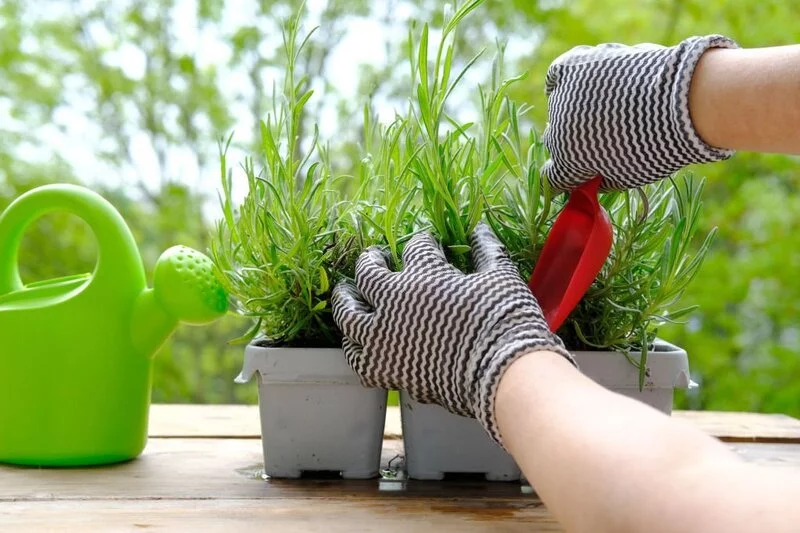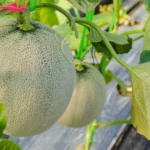Picture this: fields of purple stretching out under the summer sun, the air heavy with a soothing, floral aroma. That’s the magic of lavender, a plant beloved for its beauty and its calming scent. But what happens when your own lavender plant has outgrown its pot, or you need to make room in your garden? That’s when you roll up your sleeves and get ready to transplant. Fear not, my fellow gardeners, for today we’re going to guide you through this process, step by step.
- 100% NATURAL: Custom blend for Lavender plants container growing; no artificial ingredients
- USES: Specially formulated for growing healthy lavender plants; indoor / outdoor container gardening
- Benefits: Aeration, drainage, water retention, added nutrients, nutrient retention, & much more
- Ingredients: Peat moss, perlite, horticultural charcoal, pumice, sand, worm castings, and lime
- Size: 8 quarts (enough for a big 12-inch pot)
When to Transplant Lavender
Transplanting lavender, or any plant for that matter, is a bit like moving house. It can be stressful and needs to be done at the right time to ensure a smooth transition. So when is the best time to transplant lavender?
The ideal time to move your lavender is in the cool of fall or early spring. This is when the plant is not in its active growing phase, allowing it to focus all its energy on establishing new roots in its new location. Avoid transplanting in the heat of summer, as the combination of heat stress and transplant shock could harm your plant.
So, now you know when to transplant. But where do you move your lavender to? Let’s find out.
Selecting a New Location for Your Lavender
Lavender isn’t just any plant; it’s a Mediterranean native that loves the sun, well-draining soil, and a bit of space to breathe. When choosing a new location for your lavender, keep these needs in mind.
Find a sunny spot that gets at least six hours of sun each day. Lavender loves to bask in the sun, and lots of light helps bring out that rich, soothing aroma we all love. The soil should be well-draining – lavender doesn’t like ‘wet feet’. Adding some grit or sand to the planting hole can help improve drainage in heavy soils. Also, give your lavender room to spread out – these plants enjoy their personal space!
How to Prepare for Transplanting Lavender
Just like you’d pack your valuables carefully before a move, you need to prepare your lavender for transplanting. This involves two main steps: preparing the new site and preparing the plant itself.
First, prepare the new site by digging a hole that’s about twice the width of the lavender’s root ball and just as deep. Mix some compost or aged manure into the removed soil. This gives your lavender a nutritious boost right from the start.
Next, prepare the plant. Water your lavender a day before the big move. This makes it easier to remove the plant from its current location and reduces transplant shock. You want the soil to be moist but not waterlogged on the day of transplanting.
Armed with these tips, you’re ready to start the actual transplanting process. Ready to dig in? Let’s go!
- Breathe Life Into Any Room: Spruce up your interiors with decorative plants for living room decor. This lavender artificial flowers can turn any dull corner of your room into one that’s teeming with life and vibrance.
- Versatile Decorative Objects: Our fake purple flowers in pot can be used as end table decor or desk decor. The artificial potted flowers can also go on shelves anywhere in your home or in the office!
- Handcrafted To Perfection – The 4.5×3.1″ small plant pot is made of cement and showcases a unique handmade quality. Its gray and white pattern does a fine job of adding texture and visual appeal. Faux lavender with pot measure 10-inch tall.
- Low-Maintenance Potted Plants: Unlike real, live plants, our purple fake plant require no maintenance. No need to worry about watering the lavender plants to keep them thriving!
- Order Your Small Fake Plants Risk-Free: Our customers’ satisfaction is our first and foremost priority. For that reason, we offer a 30-day brand warranty for your peace of mind.
The Process of Transplanting Lavender
Transplanting lavender might sound complicated, but it’s really just a few simple steps. So, let’s dive into it!
- Dig it up: Start by digging around the base of your lavender plant. Aim to get as much of the root system as you can. Gently lift the plant out of the ground, being careful not to damage its roots.
- Move it over: Place your lavender in the hole you prepared at the new site. The top of the root ball should be level with the soil surface.
- Fill it in: Backfill the hole with the soil and compost mix, firming it gently around the base of the plant. Make sure there are no air pockets as these can cause the roots to dry out.
- Water well: Give your newly transplanted lavender a good drink of water. This helps settle the soil around the roots.
Aftercare for Transplanted Lavender
Just like you need a bit of time to settle in after a move, so does your lavender. In the weeks after transplanting, your main job is to keep an eye on the plant and provide it with some tender loving care.
Water your lavender regularly, but remember not to overdo it – the soil should dry out slightly between waterings. If you’ve transplanted your lavender in fall, reduce watering over winter as the plant doesn’t need as much moisture during this dormant period.
Keep a lookout for signs of stress, such as wilting or yellowing leaves. This could indicate that the plant is struggling to adjust to its new home. If you see these signs, check that you’re not over or under-watering and that the plant is getting enough sun.
With a bit of patience and care, your transplanted lavender will soon adjust to its new location and reward you with its beautiful purple blooms and calming scent. Ready to discover common mistakes to avoid when transplanting? Let’s continue our journey!
- New Liquid Fertilizer for: Lamiaceae- species like Lavender (Lavandula angustifolia, officinalis, vera, spica), Rosemary (Rosmarinus officinalis), Mint, Sage and Basil
- This food for plants belongs to the latest generation of fertilizers, for healthy leaves, strong formation and balanced rooting.
- Very rapid effects, can be administered via the roots and as a foliar fertilizer. For 60-125 liters of ready to use liquid fertilizer
- Content: 250 ml, works as an economical concentrate. Simple dosage with the help of the bottle cap.
- The fertilizers from the GREEN24 PROFI LINE were developed by gardeners of various departments and were evolved and produced based on the current knowledge in the field of propagation and cultivation of plants.
Common Mistakes to Avoid When Transplanting Lavender
Even experienced gardeners can make mistakes when transplanting lavender. But don’t worry, I’ve got you covered. Here are some common pitfalls to avoid:
- Wrong Timing: As we discussed earlier, transplanting in the heat of summer can cause unnecessary stress to the plant. Stick to the cooler seasons for the best results.
- Poor Site Selection: Choosing a shady spot or soil that doesn’t drain well are common mistakes. Remember, your lavender loves sun and hates waterlogged roots.
- Neglecting Aftercare: Just moving the plant isn’t enough. It needs care and attention in the weeks following the move. Neglecting aftercare can stunt growth or even kill your lavender.
Avoid these missteps, and you’ll be well on your way to transplanting success.
Conclusion
Transplanting lavender, like any gardening task, requires a blend of knowledge, care, and a little patience. But the rewards are worth it – a happy, healthy lavender plant that graces your garden with its beauty and scent. Remember, the key to successful transplanting is understanding your plant’s needs and meeting them as best as you can. With this guide, you’re well-equipped to give your lavender a new home where it can thrive. So grab your gardening gloves, it’s time to move some lavender!






